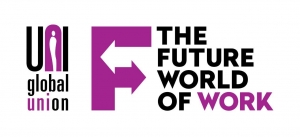All Aglow in Printing Electronics

By Bill Esler, Editor in Chief -- Graphic Arts Online, 12/24/2008 9:49:00 AM
The shift, which is accompanied by a surprising rise in the popularity this season in Amazon Kindle and Sony e-Book Readers, could bring a welcome boost to printing firms seeking new markets to which even older presses may be adapted. Amazon reports that after an endorsement by Oprah Winfrey, its Kindle e-Book reader sold out through February 2009. And 20% of the sales of a popular bestselling book were attributed to an endorsement by Winfrey, who also endorsed electronic downloads for several electronic book reading systems, including the Sony Reader, and electronic book formats used on the Apple iPhone and on laptops.
Opportunities arise for printers in producing the e-Paper used in the e-Readers. Business is opening as well for specialized trade shops, some based within publishing firms, that format the books so they present consistent page views (folios are consistently numbered, for example) across varying platforms. In another example, the December Graphic Arts Monthly TechWatch column covers automated screen printing for producing radio frequency ID tags, used to thwart shoplifters and manage inventory. At the very least, printing firms' manufacturing skill sets, from handling inks and substrates to accurately trimming finished products, may present an opportunity to move into new arenas.
Scientists and engineers working in on General Electric's OLED (organic light emitting diode) research team rang in the 2008 holiday season with this first-ever OLED Christmas tree lighting at GE’s Global Research Center headquarters in Niskayuna, NY. Illuminated in green light, GE’s flexible OLED panels provide a glimpse at how, as GE puts it a "revolutionary lighting concept is going to transform the lighting industry."
OLEDs are thin, organic materials sandwiched between two electrodes, which illuminate when an electrical charge is applied. GE believes they will provide new ways for people to light homes or businesses, using dramatically lower power consumption. Earlier this year, GE scientists achieved a major research milestone by demonstrating the world’s first roll-to-roll manufactured OLED lighting devices, which they liken to newspaper printing. The printing process is seen as a key factor to making OLED lighting commercially viable.
"While this demonstration was more for holiday spirit and team camaraderie, it does reinforce how far OLED technology has come and how it is poised to revolutionize lighting and interior design," says John Strainic, global product general manager with GE Consumer & Industrial, which will commercialize OLEDs in coming years.
“We’re making great progress toward hitting the metrics needed to successfully introduce OLED lighting to market," says Anil Duggal, who leads GE’s OLED program. "We continue to make steady advances in efficiency, lifetime and lighting-quality using device structures that can be made with roll-to-roll manufacturing, so that we’ll be able to introduce OLED lighting at an affordable price. We haven’t quite achieved Rockefeller or National Christmas tree lighting status yet, but we’re well on our way."
http://www.graphicartsonline.com/article/CA6625005.html?nid=3470&rid=reg_visitor_id&source=title

